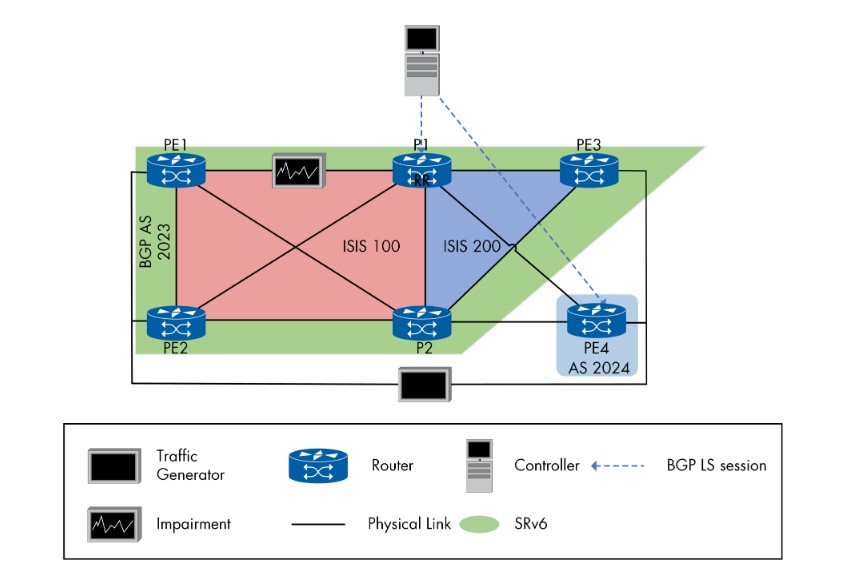New-age applications demand cutting-edge networks. From smart energy to autonomous driving, connected health, smart cities and Industrial IoT, today’s applications are becoming increasingly dependent on networks that are high-performant, agile and scalable.
To meet these requirements, CSPs are turning to latest breakthroughs in AI, where techniques such as ML/DL enable networks to fully automate network planning, management and control, based on traffic data that is collected over time. This gives rise to autonomous networks (AN) which can dynamically adjust network resources and capacity based on real-time user and application requirements.
AN essentially addresses some of the most pressing issues plaguing CSPs, namely over-dependency on human intervention and escalating network costs, as well as QoS and CX concerns. AWS, in its analysis, finds the use of zero-touch deployment and automation across telco hybrid cloud infrastructure delivering, on average, an 80% reduction in the time taken to deploy and update 5G CNFs [1]. Such benefits are expected to weigh heavily on telco investments decisions. According to Tactica (now Omdia), CSP’s investment in AI is expected to top USD36.7 billion by 2025 [2].
How industry collaboration accelerates AN
Spearheading the industry’s push towards AN is TM Forum. TM Forum has outlined the Autonomous Network Framework which helps CSPs to align networks and services to user requirements. The framework combines four closed loops at the user-, business-, service- and resource-level with business, service and resource operations to support intent-driven interactions such as intent-driven RAN automation or intent-based automated QoS.
To drive greater interoperability in AN, TM Forum has also joined hands with several standards development organizations (SDOs) to establish deeper consensus across various fronts including AN concepts, architecture and implementation parameters. This includes the Autonomous Networks Multi-SDO initiative which aims to unify AN standards, with each SDO taking an active lead in their respective verticals (e.g. wireless or IP/Optical) and functional areas (e.g. Key Effectiveness Indicators or Key Enablers).
Continuous benchmarking spurs CSPs’ efforts toward AN
To facilitate organizational and industry benchmarking, TM Forum has also introduced the six-tier AN maturity model, ranked from ‘Level 0’ to ‘Level 5’. Leading CSPs today are rapidly heading towards achieving ‘Level 4’ automation [3], where predictive analysis and proactive remediation enables networks to self-provision, self-diagnose and self-heal. This will eventually lead to Level 5, a fully autonomous state with full closed-loop automation across all services and domains. Other levels on the model classify AN as follows: ‘Level 0’ for no automation, ‘Level 1’ for limited automation, ‘Level 2’ where networks are partially autonomous and ‘Level 3’ which features a conditional autonomous network with dynamically programmable policies.
Putting Huawei’s Autonomous Network Solution to test
Gearing up towards an autonomous future, leading ICT player, Huawei, has recently commissioned the first independent AN testing by Berlin-based EANTC, a leading independent test lab for telecom technologies. The test aims to validate Huawei’s Autonomous Network Solution in achieving autonomous benchmarks. It aligns to ETSI’s Experiential Networked Intelligence (ENIGR 035) draft.
The test topology is modelled upon real network conditions. It deploys Segment Routing over IPv6 (SRv6) and features Huawei’s iMaster Network Cloud Engine for IP (iMaster NCE-IP) as the controller. Routers comprise two core NetEngine 8000s, two aggregation NE40Es and two edge ATN980Cs (one representing AN and another representing legacy MPLS), linked over L2VPN, EVPN and L3VPN. Traffic manipulation was executed via a Spirent load generator and an impairment generator. Observations were made on the network’s self-optimization capabilities in the face of network failures and quality degradations, and how it consistently maintained connectivity and the given SLAs.
 Figure 1: Test topology
Figure 1: Test topology
Towards Level 4 readiness
The test assessed three functional areas of intelligent network operation and management, i.e. advanced network provisioning, intelligent fault detection and path optimization. Each area was assessed for its level of autonomy in terms of intent management, awareness, analysis, decision making and execution, creating a fine-grained capability matrix.
The test saw network provisioning achieving ‘Level 4’ automation, with dynamically defined service models and the use of digital twins for near real-time network monitoring and instantaneous resource status updates. Automation was also evident across resource allocation, network path calculation, device configurations and service status validation. Fault detection displayed a mix of ‘Level 3’ and ‘Level 4’ automation. Here, the network still relied on manual selection of pre-configured fault analysis correlation rules but used AI and flow-based detection to identify changes before establishing backup routes and adjusting service paths. A similar mix was observed in path optimization where manually selected optimization rules were paired with automation in detecting QoS issues and optimizing tunnels based on near real-time information. Overall, Huawei’s Autonomous Network Solution returned an average score of 3.8, demonstrating the viability of Level 4 automation in a single-vendor ecosystem.
The greater acceleration starts
As the industry embarks on its next lap towards fully autonomous networks, many emerging use cases, especially those leveraging 5G, cloud, edge computing and IoT, will experience significant improvements in speed, latencies and overall service quality and reliability. Network efficiencies brought by AN specifically, will transcend CSP profit goals, to enable wider social benefits including energy savings and a lower carbon footprint. Huawei’s latest feat therefore, is not only a significant step forward for AN, but is also a huge leap in how advancements in AI shape the telco future.
To learn more about Huawei’s Autonomous Network, please click here: Huawei Autonomous Driving Network (ADN)
Sources:




















